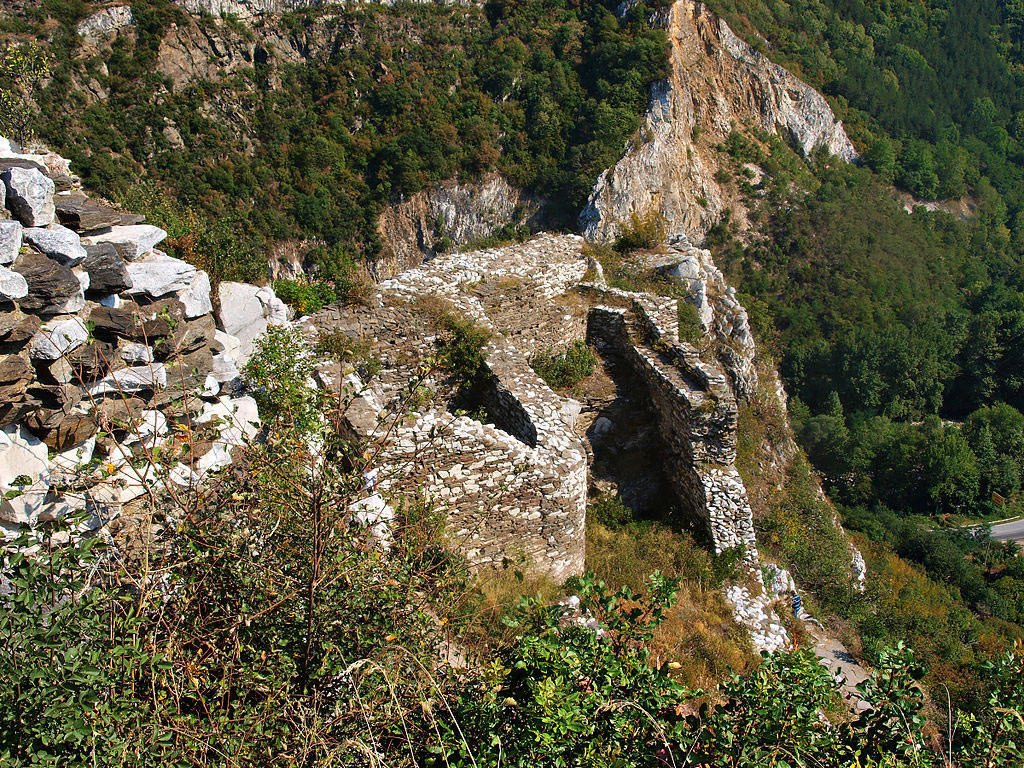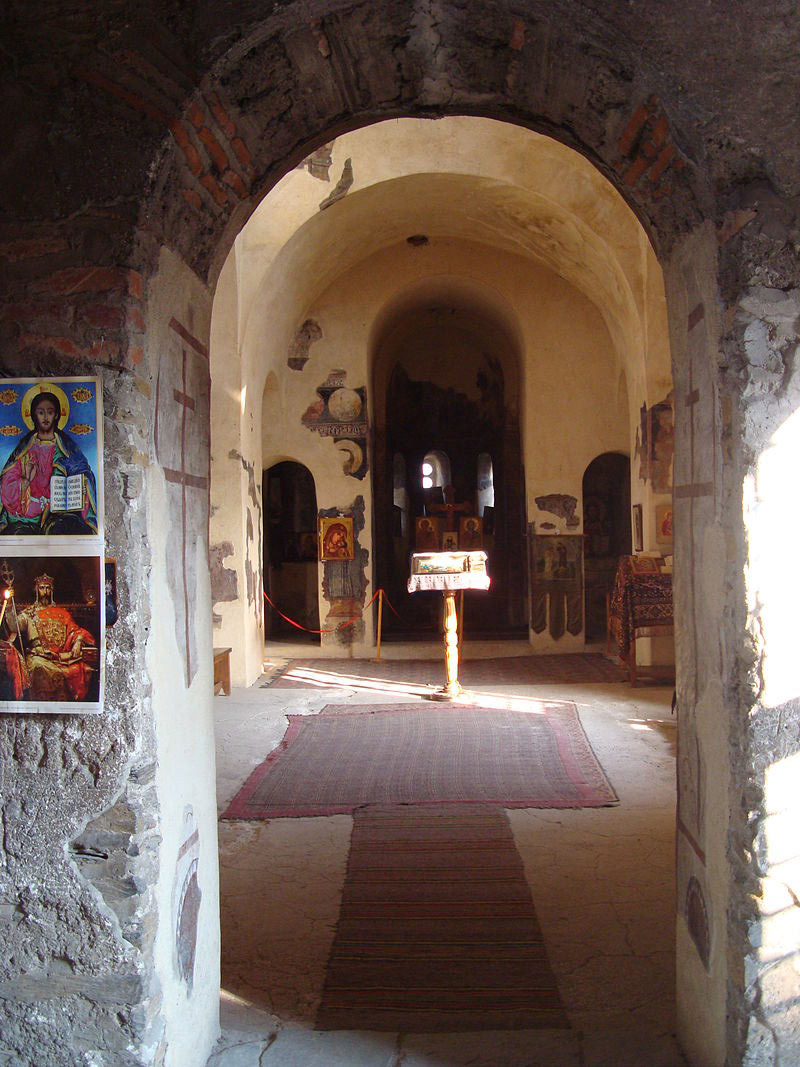 4
4
A hard-to-reach fortress rose on a solitary ridge, which was towering above the Asenitsa River. This place built high in the rocks was once sheltering Thracians, Romans, Byzantines, Western Europeans, Bulgarians and Ottomans.

One Christmas Eve, a stranger took refuge from a blizzard near the church built in the fort. He saw mysterious lights streaming from the temple while the bell tower was calling the people to join the church service with its wonderful sound. He saw the church in all its dignity, as if time had left no destructive traces on it. The smell of incense was all around the place and inside the temple worshipers dressed in ancient garments were singing church hymns in praise of Jesus. When the priest finished the church service and the last Amen echoed in the night, the lights went off and the church regained its previous look. This was the last service of father Antimos. Five centuries ago, this priest incurred God’s wrath, because he shortened the liturgy, broke the fast and sat on the festive table too early. He feasted on the meals too much and had a cardiac arrest. God punished him to serve for 500 years the same liturgy, with the same people in the same church, this time under the religious canons.

This is one of the legends about Asen’s Fortress. Some of them are close to historical facts, others are mere legends that have been passed from generation to generation until presenttimes. The fortress is situated 2 kilometers south of the town of Asenovgrad on a steep, high rocky ridge towering above the left bank of Asenitsa river. The earliest archaeological findings date back to the time of the Thracians. In the 4th century AD, Emperor Justinian used the fort to protect the empire from the invading Slavic tribes. The fortress was built during three separate periods- in the 9th, the 11th and the 13th centuries. Later, it was conquered and destroyed by the Ottomans and more specifically by the sons of Sultan Bayezid.

The rocky ridge where Asen’s Fortress was built has been inhabited since ancient times, because it is a natural fortification with sheer cliffs, the Director of the Museum of History in Asenovgrad Ivan Dukov told Radio Bulgaria. The findings reveal human presence since the Neolithic period. In the Middle Ages the fortress became a fortified city with a citadel, where a governor appointed by the rulers of Bulgaria and the Byzantium lived, which is proven by the eight-line rock inscription dating back to the time of King Ivan Asen 2. Asen’s Fortress is situated on an important strategic route and was once part of a fortification system containing similar sites situated around the town of Asenovgrad that were connected with each other. Their main purpose was to defend the pass from the Upper Thracian Plain to the Aegean Sea.

 Until now, the archaeological excavations in the feudal castle revealed a complex of residential buildings, a church, two water reservoirs and a tower. Under the fortress there is a yard with well-preserved two-storied church – The Holy Virgin of Petrich. It is a true masterpiece of the medieval Christian architecture and was painted by skilled icon-painters. This is a single-nave and single-apse church built with different construction techniques.
Until now, the archaeological excavations in the feudal castle revealed a complex of residential buildings, a church, two water reservoirs and a tower. Under the fortress there is a yard with well-preserved two-storied church – The Holy Virgin of Petrich. It is a true masterpiece of the medieval Christian architecture and was painted by skilled icon-painters. This is a single-nave and single-apse church built with different construction techniques.
According to some experts in medieval architecture, the West tower was additionally built later by the Crusaders and others contend that this building is a typical Eastern European temple, Ivan Dukov went on to say. It served as a bell tower and was probably used as watch-tower as well. The church was painted both inside and outside, but the dome collapsed during one of the earthquakes in the beginning of the 20th century. Unfortunately, the local residents were not able to restore the roof space immediately and most of the frescoes were damaged by the moisture. Well-preserved frescoes can be now seen in the West tower.
Asen’s Fortress and the Holy Theotokos of Petrich Church were included in the list of the 100 National Tourist Sites of Bulgaria. A narrow pathway with preserved fortress walls up to four meters high to its left side takes tourists to the popular archeological site.
English version: Kostadin Atanasov
In recent years the famous winter resort of Bansko in Mount Pirin has also been developing as a summer tourist location. There are fascinating museums here that are open all the year round, revealing different aspects of the town’s history..
There is a sacred place in the Balkan Mountain Range beloved by all Bulgarians. We are talking about the Shipka peak where the National Monument of Freedom was built. One of the most popular military monuments was built in honor of the Russian..
Number 25 in the list of the 100 National Tourist Sites in Bulgaria is the St. John the Forerunner Orthodox monastery. Its ruins are situated on beautiful heights above the Arda River which crosses the town of Kardzhali. The..

+359 2 9336 661
